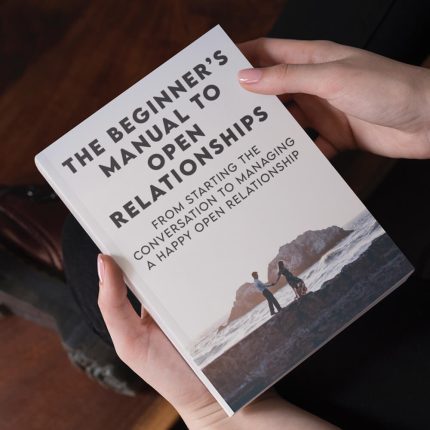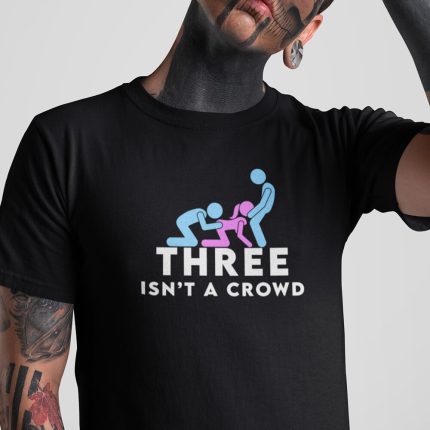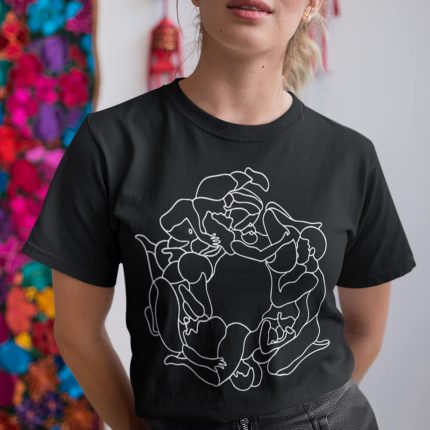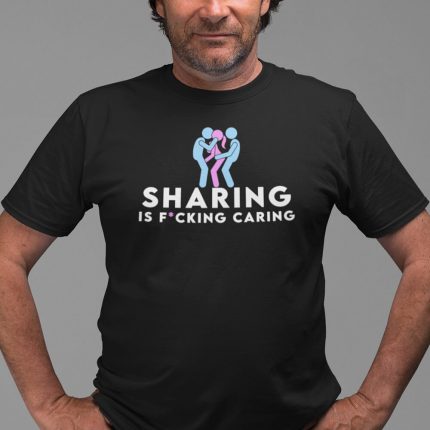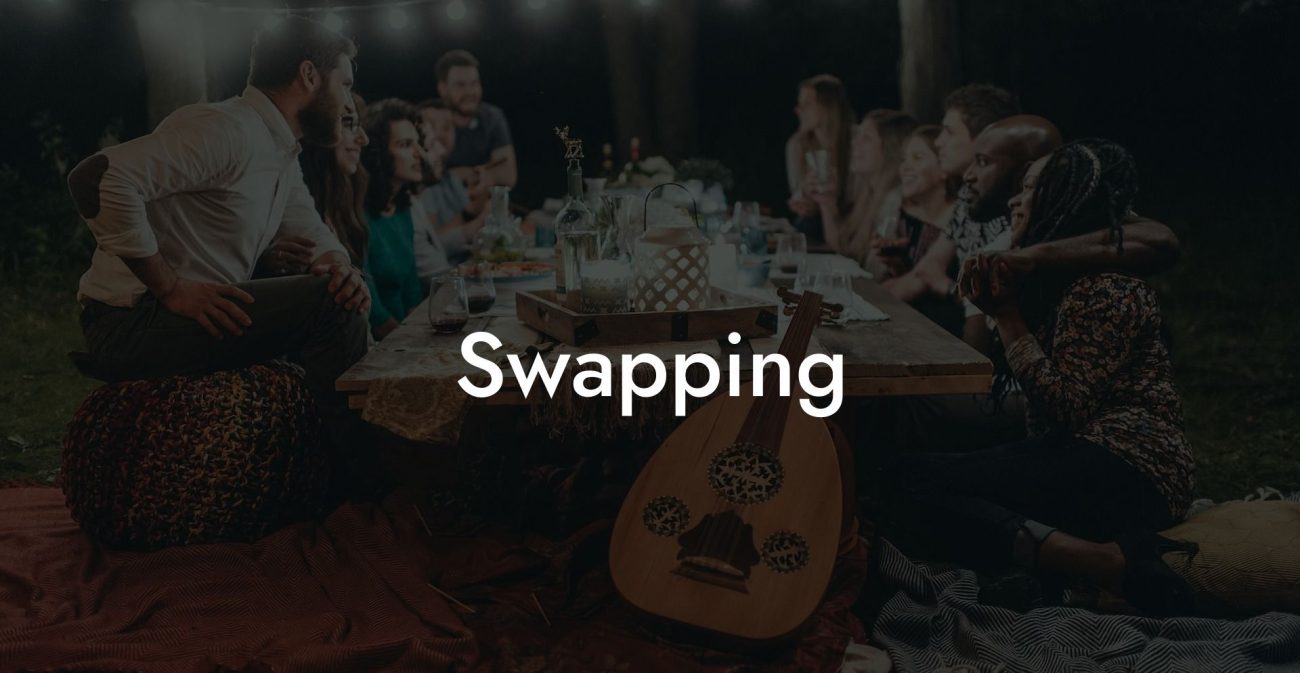Intimacy Collective

Imagine a gathering where every heart comes together in a harmonious celebration of connection—a space where vulnerability, trust, and shared passion form the foundation of every encounter. Welcome to Intimacy Collective, a vibrant concept in ethical non monogamy that redefines what it means to truly connect. In an Intimacy Collective, love is not a solitary endeavor but a collaborative dance of shared emotions and mutual support. Whether you’re seeking deeper connections, enhanced communication, or a way to weave your relationships into a resilient network, this approach invites you to explore intimacy as a collective journey—a tapestry of interwoven hearts that grows richer with every shared moment.
Have you ever wondered if monogamy is just a stupid little experiment? Open relationships, polyamory, relationship anarchy...find out which relationship dynamic suits you best with our one minute relationship test. See if you are just conforming to "societal norms". Reveal your truth >>
Quick Links to Useful Sections
- The Ethical Non Monogamy Term: Intimacy Collective
- What Is an Intimacy Collective?
- Core Principles of Intimacy Collective
- Historical and Cultural Perspectives on Intimacy Collective
- From Isolated Bonds to Collaborative Connection
- Cultural Shifts in Modern Love
- Everyday Dynamics of an Intimacy Collective
- Fostering Shared Vulnerability
- Building a Culture of Open Dialogue
- Navigating Boundaries and Evolving Needs
- Benefits of Embracing an Intimacy Collective
- Deepened Emotional Connections
- Collective Resilience and Support
- Personal Empowerment and Growth
- Improved Communication and Conflict Resolution
- Challenges of Practicing an Intimacy Collective
- Managing Complex Communication
- Balancing Individual Needs with Collective Dynamics
- Adapting to Constant Change
- Navigating External Judgment
- Frequently Asked Questions (FAQ)
- Resources and Community Support: Your Next Steps
The Ethical Non Monogamy Term: Intimacy Collective
What Is an Intimacy Collective?
An Intimacy Collective is a framework for understanding and practicing emotional and physical closeness as a group endeavor rather than a strictly dyadic (two-person) connection. It involves a community of individuals who actively engage in fostering deep, authentic bonds through continuous communication, shared experiences, and mutual vulnerability. In this model, intimacy is seen as a shared resource that benefits everyone involved, rather than a limited commodity reserved for a single partner.
The concept challenges traditional notions of exclusive intimacy by emphasizing that true connection can flourish when multiple hearts come together. Rather than compartmentalizing love into individual relationships, an Intimacy Collective views every connection as part of an expansive network—a living, breathing system in which every participant contributes to and draws from a common well of emotional and physical closeness.
Core Principles of Intimacy Collective
- Shared Vulnerability: Authentic intimacy is built on the willingness to be vulnerable. In an Intimacy Collective, each member shares their true selves, knowing that openness is met with empathy and support.
- Mutual Support: Every individual in the collective plays a role in nurturing and reinforcing the network. This means celebrating successes, providing comfort during challenges, and continuously uplifting one another.
- Open Communication: Transparent and ongoing dialogue is the cornerstone. Honest conversations about needs, desires, and boundaries ensure that all members remain aligned and that conflicts are resolved constructively.
- Inclusivity: An Intimacy Collective embraces diverse identities and relationship styles, ensuring that every voice is heard and every perspective is valued.
- Dynamic Adaptability: Recognizing that feelings and relationships evolve, the collective regularly revisits and adjusts its norms and boundaries to reflect current emotional landscapes.
- Collective Empowerment: Growth is a shared journey. The collective not only supports individual development but also thrives as a unified network, empowering each member to explore and express love freely.
Historical and Cultural Perspectives on Intimacy Collective
From Isolated Bonds to Collaborative Connection
Historically, love and intimacy were often confined to isolated, one-on-one relationships, with cultural norms promoting exclusivity as the ideal form of connection. For many, the notion of intimate connection was limited by societal expectations that emphasized possession and exclusivity. However, as social and cultural paradigms shifted—sparked by movements such as the sexual revolution, feminism, and the rise of ethical non monogamy—people began to envision intimacy as a more expansive and interconnected experience.
EXPLORE OUR ETHICAL NON-MONOGAMY & OPEN RELATIONSHIP SHOP
👨💻👩💻 Digital Store (Instant Download)
🍆💦 Clothing Store (Worldwide Delivery Available)
Three Isn't a Crowd Unisex T-Shirt (White)
$29.99Three Isn't a Crowd Unisex T-Shirt (Black)
$29.99I Love Watching Pop Art T-Shirt (White)
$29.99I Love Watching Pop Art T-Shirt (Black)
$29.99Sharing Is Caring Daddy Cap (Black)
$39.99Fuck Each Other Not The Planet Unisex T-Shirt (Black)
$29.99Multiple Lovers - Sharing Is Caring Unisex T-Shirt (Black)
$29.99Real Men Share Pop Art T-Shirt (Black)
$29.99Real Men Share Pop Art T-Shirt (White)
$29.99It's Not Cheating If He Watches T-Shirt (Black)
$29.99Sharing Is Caring Unisex T-Shirt (Black)
$29.99Fuck Each Other Not The Planet Unisex T-Shirt (White)
$29.99Early pioneers in non monogamous communities experimented with collective forms of intimacy, forming chosen families and support networks that challenged the confines of traditional romance. These communities recognized that the sharing of love could amplify emotional well-being and foster resilience. Over time, the metaphor of an Intimacy Collective emerged as a powerful way to describe these interconnected, supportive relationship models.
Cultural Shifts in Modern Love
In our digital age, where global connectivity and diverse perspectives are the norm, the idea of an Intimacy Collective resonates deeply—especially among Millennials and Gen-Z. Social media, online forums, and relationship podcasts have all contributed to a broader understanding of love as a fluid, multifaceted experience. Modern narratives now celebrate the beauty of shared vulnerability, collective growth, and the breaking down of traditional, restrictive relationship molds.
Today, the Intimacy Collective is seen as a way to build not only personal connections but also a supportive community that nurtures emotional resilience. This model reflects a cultural shift toward valuing inclusivity, transparency, and the interconnectedness of our emotional lives.
Everyday Dynamics of an Intimacy Collective
Fostering Shared Vulnerability
Practicing an Intimacy Collective in daily life means creating regular opportunities for shared vulnerability. This could involve scheduled group check-ins, intimate one-on-one conversations, or even creative expressions of emotion like collaborative art projects. The goal is to create a safe space where every member feels comfortable sharing their true feelings.
- Group Check-Ins: Regularly convene with all members to discuss your current emotional states, celebrate successes, and address any emerging challenges.
- One-on-One Time: Complement group interactions with individual conversations to build deeper, personalized connections.
- Creative Expression: Engage in shared activities such as writing, music, or art to capture and celebrate the collective emotional journey.
Building a Culture of Open Dialogue
At the heart of the Intimacy Collective is honest, open communication. This means not only expressing your own emotions but also actively listening to others. Regular, transparent conversations help to establish trust and ensure that everyone’s needs are met.
- Daily Check-Ins: Simple routines like morning reflections or evening debriefs can maintain a steady flow of dialogue.
- Digital Communication: Use group chats, shared calendars, and online platforms to stay connected, even when physical meetings aren’t possible.
- Feedback Loops: Encourage constructive feedback and discussion to continuously refine the collective’s practices.
Navigating Boundaries and Evolving Needs
As relationships evolve, so do emotional needs. An Intimacy Collective requires a dynamic approach to boundaries, where members regularly revisit and renegotiate what feels supportive and safe. This flexibility ensures that the collective remains a nurturing and adaptive environment.
- Regular Boundary Reviews: Schedule periodic discussions to revisit and adjust personal and collective boundaries.
- Adaptive Agreements: Recognize that your needs may change and be willing to adapt your agreements to reflect your current state.
Benefits of Embracing an Intimacy Collective
Deepened Emotional Connections
When you share your vulnerability and foster open dialogue, your emotional bonds deepen. The collective support of an Intimacy Collective enhances each relationship, creating a rich, multi-dimensional tapestry of connection.
- Layered Intimacy: Every shared experience adds depth, resulting in relationships that are resilient and profoundly fulfilling.
- Enhanced Trust: Open, honest communication builds a foundation of trust that strengthens the entire network.
Collective Resilience and Support
A key benefit of an Intimacy Collective is the robust support system it creates. When every member contributes to the emotional well-being of the group, challenges are met with collective strength, and successes are celebrated as a shared victory.
- Shared Strength: Multiple sources of support ensure that you’re never facing challenges alone.
- Emotional Synergy: The energy and positivity from one relationship can uplift and reinforce others, creating a resilient network.
Personal Empowerment and Growth
Being part of an Intimacy Collective encourages you to explore your own emotional landscape and embrace your true self. This journey of self-discovery not only enriches your personal life but also contributes to the collective growth of the network.
- Increased Self-Awareness: Regular self-reflection helps you understand your emotional triggers and needs.
- Mutual Empowerment: As every member grows, the entire collective becomes more vibrant and supportive.
Improved Communication and Conflict Resolution
Continuous, honest dialogue is the lifeblood of an Intimacy Collective. This open communication not only prevents misunderstandings but also creates a framework for resolving conflicts constructively.
- Proactive Discussions: Regular check-ins help identify potential issues before they escalate.
- Empathetic Listening: Open dialogue fosters empathy, making it easier to address conflicts with understanding and compassion.
Challenges of Practicing an Intimacy Collective
Managing Complex Communication
With multiple relationships in play, maintaining clear and effective communication can be challenging. It requires regular, honest check-ins and a commitment to active listening from all members.
- Tip: Schedule both group and individual sessions to ensure that every voice is heard.
- Tip: Utilize digital tools to organize and streamline communication.
Balancing Individual Needs with Collective Dynamics
Each person has unique emotional needs, and balancing these with the collective well-being of the network can be delicate. Conflicts may arise when personal desires clash with group expectations.
- Tip: Engage in transparent, honest discussions about both personal and collective goals.
- Tip: Be willing to renegotiate boundaries to ensure that everyone feels both supported and independent.
Adapting to Constant Change
The dynamic nature of an Intimacy Collective means that change is inevitable. Embracing this fluidity can sometimes lead to uncertainty or instability if not managed effectively.
- Tip: Practice mindfulness and self-reflection to remain grounded amid change.
- Tip: Regularly revisit and adjust emotional agreements to keep the network aligned with everyone’s evolving needs.
Navigating External Judgment
Despite growing acceptance of ethical non monogamy, external criticism or traditional views on love may still challenge your Intimacy Collective. Such pressures can sometimes create self-doubt or conflict within the network.
- Tip: Build a supportive community of like-minded individuals who celebrate open, authentic relationships.
- Tip: Focus on the collective strength and shared values of your network rather than external opinions.
Frequently Asked Questions (FAQ)
1. What is an Intimacy Collective?
An Intimacy Collective is a framework for understanding and nurturing your emotional and physical connections as part of a larger, interconnected network. It emphasizes shared vulnerability, open communication, and mutual support among all partners.
2. How does an Intimacy Collective differ from traditional relationships?
Unlike traditional relationships that focus on exclusive, dyadic bonds, an Intimacy Collective embraces the idea that love and connection are enhanced through a network of diverse, interdependent relationships.
3. What are the core principles of an Intimacy Collective?
Core principles include shared vulnerability, mutual support, open communication, inclusivity, dynamic adaptability, and collective empowerment.
4. How can I build an Intimacy Collective?
Start by fostering open, honest dialogues with your partners, engaging in regular group and individual check-ins, and creating spaces—both physical and digital—for shared experiences and reflections.
5. What benefits does an Intimacy Collective offer?
Benefits include deeper emotional connections, enhanced personal growth, improved conflict resolution, and a resilient network of support that enriches every aspect of your love life.
6. What challenges might arise in maintaining an Intimacy Collective?
Challenges include managing complex communication, balancing individual needs with collective dynamics, adapting to constant change, and navigating external judgment or societal expectations.
7. How important is communication in an Intimacy Collective?
Communication is crucial—it ensures that every partner’s voice is heard, that boundaries are respected, and that the network remains flexible and supportive.
8. Can an Intimacy Collective exist in both monogamous and non monogamous contexts?
Yes, the principles of an Intimacy Collective can enhance any relationship model by fostering deep, authentic connections and collective support.
9. How do shared experiences contribute to an Intimacy Collective?
Shared experiences deepen emotional bonds, create lasting memories, and add layers of meaning to the collective network, enhancing its overall resilience.
10. What role does self-care play in an Intimacy Collective?
Self-care is essential—it ensures that you remain emotionally balanced and capable of contributing positively to the collective support system.
11. How can I overcome challenges related to vulnerability within an Intimacy Collective?
Start with small, manageable acts of openness, practice mindfulness and self-compassion, and engage in regular, supportive dialogues with your partners to build trust gradually.
12. Where can I find more resources on Intimacy Collective and ethical non monogamy?
Additional resources include books like The Ethical Slut by Dossie Easton & Janet Hardy, podcasts such as Multiamory, and online communities like r/polyamory that explore diverse, interconnected relationship practices.
Resources and Community Support: Your Next Steps
- The Ethical Slut by Dossie Easton & Janet Hardy – A foundational text that offers insights into ethical non monogamy and provides practical strategies for building a supportive, interconnected emotional network.
- Podcasts: Listen to Multiamory and similar podcasts for personal stories, expert advice, and techniques on nurturing an Intimacy Collective.
- Online Communities: Join forums like r/polyamory to share experiences, ask questions, and connect with others who value deep, collective intimacy.
- Workshops and Webinars: Attend events on relationship psychology and ethical non monogamy to deepen your understanding and build a robust support network.
- Therapy and Counseling: Consider professional guidance if you need help managing complex emotions or navigating challenges related to collective vulnerability.
By exploring these resources and applying the practical strategies outlined in this guide, you can cultivate an Intimacy Collective that enriches every facet of your emotional life. Embrace the power of shared vulnerability, celebrate collective growth, and let your relationships weave together into a dynamic tapestry of authentic, interconnected love.
EXPLORE OUR ETHICAL NON-MONOGAMY & OPEN RELATIONSHIP SHOP
👨💻👩💻 Digital Store (Instant Download)
🍆💦 Clothing Store (Worldwide Delivery Available)
It's Not Cheating If He Watches T-Shirt (Black)
$29.99Real Men Share Pop Art T-Shirt (Black)
$29.99Sharing Is Caring Daddy Cap (Black)
$39.99Three Isn't a Crowd Unisex T-Shirt (Black)
$29.99Sharing Is Caring Unisex T-Shirt (Black)
$29.99Multiple Lovers - Sharing Is Caring Unisex T-Shirt (Black)
$29.99Real Men Share Pop Art T-Shirt (White)
$29.99Three Isn't a Crowd Unisex T-Shirt (White)
$29.99I Love Watching Pop Art T-Shirt (White)
$29.99Fuck Each Other Not The Planet Unisex T-Shirt (Black)
$29.99Fuck Each Other Not The Planet Unisex T-Shirt (White)
$29.99I Love Watching Pop Art T-Shirt (Black)
$29.99Lost & confused by all of the terms, types and seemingly made up 3 letter acronyms?? We've got you. Check out our Ethnical Non-Monogamy Dictionary >>
Useful Interruption: Not sure which relationship vibe fits you best? Take our Relationship Test, it’ll give you the real insight into your natural relationship style. Then, dive into our binge-worthy guides (from the tried-and-true to the “wait, that’s a thing?”) and find the perfect relationship type for your life:
- Monogamy
- Open Relationships
- Ethical Non-Monogamy
- Solo Polyamory
- Non-Hierarchical Polyamory
- Hierarchical Polyamory
- Relationship Anarchy
- Swinging
Now back to the main article but yeah take the test...



